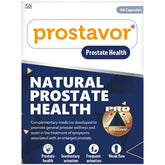Kyphosis
Kyphosis is a condition characterized by an excessive forward curvature of the spine, leading to a rounded or hunched posture. Understanding the causes, symptoms, diagnosis, and treatment options for kyphosis is crucial for appropriate management and prevention of complications.
Causes
Kyphosis can result from various factors, including:
-
Poor Posture: Habitual slouching or poor posture over time can contribute to the development of kyphosis, particularly in adolescents or young adults.
-
Osteoporosis: Weakening of the bones due to osteoporosis can lead to compression fractures in the vertebrae, causing kyphosis, particularly in older adults.
-
Congenital Abnormalities: Some individuals may be born with congenital anomalies affecting the shape or structure of the spine, leading to kyphosis.
-
Degenerative Conditions: Degenerative changes in the spine, such as degenerative disc disease, arthritis, or spinal stenosis, can contribute to the development of kyphosis.
-
Scheuermann's Disease: Scheuermann's disease is a spinal disorder characterized by abnormal growth of the vertebrae during adolescence, leading to wedge-shaped vertebrae and kyphosis.
-
Trauma or Injury: Traumatic injuries, such as vertebral fractures or spinal cord injuries, can result in kyphosis, particularly if left untreated or inadequately managed.
Symptoms
Symptoms of kyphosis may vary depending on the underlying cause, severity of curvature, and individual factors. Common symptoms may include:
-
Rounded Back: Excessive forward curvature of the upper spine, leading to a rounded or hunched posture, particularly noticeable when standing or sitting.
-
Back Pain: Chronic back pain or discomfort, particularly in the upper back or shoulders, may occur due to muscle strain, spinal compression, or nerve irritation.
-
Stiffness: Decreased flexibility and range of motion in the spine, particularly in the affected area of curvature, may contribute to stiffness and difficulty with activities of daily living.
-
Nerve Compression: Severe kyphosis can compress spinal nerves, leading to symptoms such as numbness, tingling, weakness, or radiating pain in the arms or legs.
-
Breathing Difficulties: Severe kyphosis can compress the chest cavity and impair lung function, leading to shortness of breath, reduced exercise tolerance, or respiratory problems.
Diagnosis
Diagnosing kyphosis typically involves a combination of medical history review, physical examination, imaging studies, and diagnostic tests. Diagnostic steps may include:
-
Medical History: A healthcare provider will inquire about symptoms, onset, duration, progression, and factors that may contribute to the development of kyphosis, such as trauma, injury, or underlying medical conditions.
-
Physical Examination: A physical examination is performed to assess spinal alignment, posture, range of motion, muscle strength, and neurological function.
-
X-rays: X-ray imaging of the spine is used to evaluate the degree of curvature, assess vertebral alignment, and identify any abnormalities or structural changes in the spine.
-
MRI or CT Scan: Advanced imaging studies such as magnetic resonance imaging (MRI) or computed tomography (CT) scan may be ordered to visualize soft tissues, nerve roots, and spinal cord structures for further evaluation.
-
Bone Density Test: In cases of suspected osteoporosis-related kyphosis, a bone density test (DEXA scan) may be performed to assess bone density and determine the presence of osteoporosis or osteopenia.
Treatment
Treatment for kyphosis depends on the underlying cause, severity of curvature, presence of symptoms, and individual factors. Treatment options for kyphosis may include:
-
Posture Correction: Emphasizing proper posture, ergonomic adjustments, and strengthening exercises for the back muscles can help improve spinal alignment and reduce the progression of kyphosis.
-
Physical Therapy: A structured physical therapy program may be recommended to improve spinal flexibility, strengthen the muscles supporting the spine, and promote postural awareness.
-
Pain Management: Nonsteroidal anti-inflammatory drugs (NSAIDs), muscle relaxants, or pain medications may be prescribed to alleviate back pain and discomfort associated with kyphosis.
-
Bracing: In adolescents with progressive kyphosis, particularly due to Scheuermann's disease, a spinal brace may be prescribed to support the spine, correct spinal alignment, and prevent further curvature progression.
-
Surgical Intervention: In severe or progressive cases of kyphosis that do not respond to conservative treatment, surgical intervention such as spinal fusion, vertebral osteotomy, or corrective osteotomy may be considered to stabilize the spine, improve spinal alignment, and relieve nerve compression.
Prevention
Preventing kyphosis involves maintaining good posture, practicing proper body mechanics, engaging in regular exercise to strengthen the back muscles, and addressing risk factors such as osteoporosis or spinal trauma. Early detection, prompt medical evaluation, and appropriate treatment of underlying conditions can help prevent the progression of kyphosis and minimize the risk of complications.
Conclusion
Kyphosis is a spinal condition characterized by excessive forward curvature of the upper spine, leading to a rounded or hunched posture. By understanding the causes, symptoms, diagnosis, and treatment options for kyphosis, individuals can take proactive steps to manage symptoms, prevent progression, and maintain optimal spinal health and function. Close collaboration between the patient, healthcare provider, physical therapist, and orthopedic specialist is essential for developing a personalized treatment plan tailored to the individual's needs and goals. Early intervention, appropriate medical care, and lifestyle modifications are essential for optimizing outcomes and improving quality of life for individuals affected by kyphosis.
- Complication of Kyphosis
- Diagnosis of Kyphosis
- How is Kyphosis treated?
- Kyphosis
- Kyphosis myths
- Medicine for Kyphosis
- Remedies for Kyphosis
- Support for Kyphosis
- Symptoms associated with Kyphosis
- The best British Online Pharmacy
- Top 10 UK Pharmacies
- Treatment for Kyphosis
- What causes Kyphosis
- What is Kyphosis
- Where can I buy medicine for Kyphosis in the UK
- ZimSeller Pharmacy



















